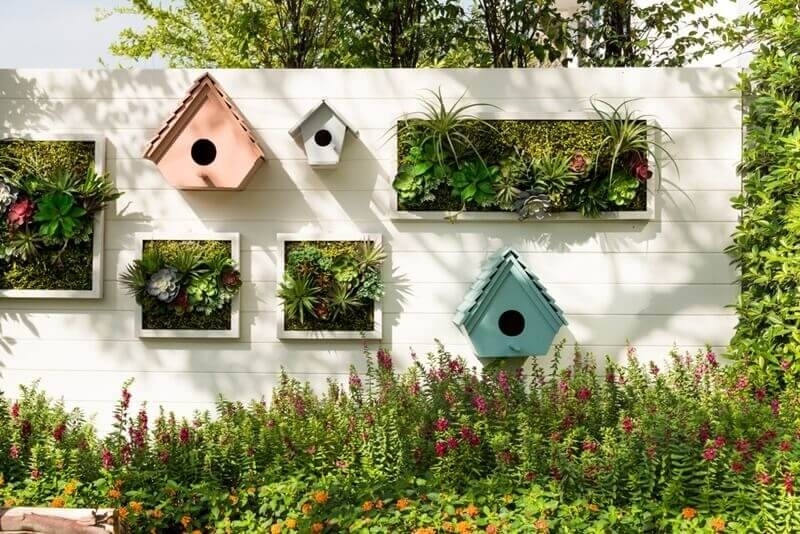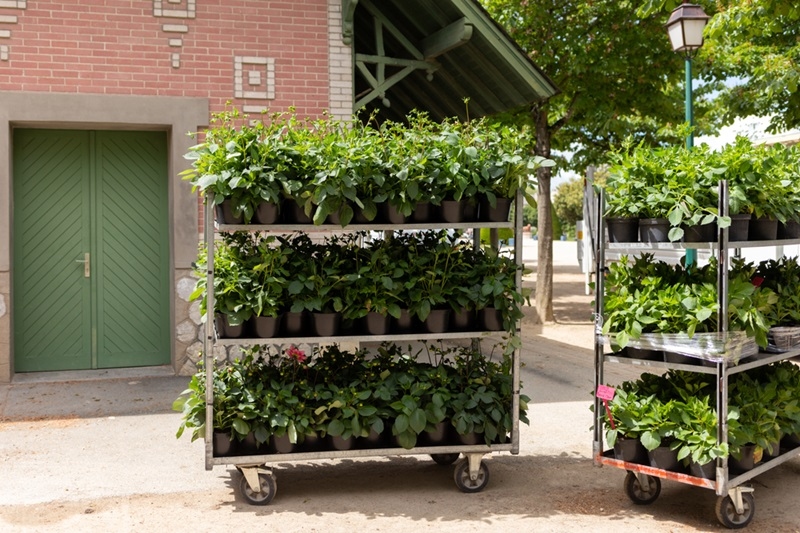
If you are living in a busy city where space is at a premium and people are more aware of the environment, you should look for vertical gardening solutions, as you will be able to get a practical and adorable green space for yourself. Gone are the days when one had to give up the view and access to fresh air due to a lack of space in the apartment.
Suitable vertical gardening ideas can help you increase your green area in the balconies filled with plants, small corners of the house, and even walls. Apart from saving space, this style of gardening also promotes an environmentally friendly way of life.
Vertical gardening is a method whereby one grows plants upwards rather than giving them space laterally. The method in which the plants are grown is a matter of using different techniques, such as walls, lattices, vines, and so on. It is a must-have for people who live in the city and have limited outdoor space, and at the same time have a need for a green area.

One of the main benefits of vertical gardening is better space utilization. A traditional garden will have the capacity to accommodate only one person per family living in a 2,000 square foot house.
Some of the major benefits of vertical gardening can be:
Vertical gardens can not only be made from expensive items but are also visually appealing and eco-friendly. The core of the vertical garden design is to be eco-friendly, focusing on the eco-friendly factors and a reduction of material consumption. Wooden pallets, containers made from recyclable materials, and plastic bottles can all be utilized as planters, a way of reducing garbage and adding charm to your garden.
Water-saving is another vital feature that goes hand in hand with eco-friendliness. Using water-efficient devices such as drip irrigation and self-watering pots will ensure that water is not wasted while still allowing plants to get the required amount of water. A collection of rainwater could also be a relatively easy way of making your vertical garden a green one.
Vertical gardening is an extremely good method when it comes to gardening in small areas like apartments, terraces, or balconies. It is still possible to have an off-the-wall garden and produce your own food for your family in an apartment or townhouse with no yard at all. Empty balcony walls can be hidden using modular planters, which are transformed into a mini-garden. Kitchen walls are the best place for growing herbs; they provide fresh ingredients while saving counter space.
With ladder-shelves and tiered shelving, even the smallest corners can be converted into an oasis; therefore, you can grow different layers of plants without your room being crowded. One can be green even in the most cramped homes through a vertical garden for small spaces.
DIY wall planters will be an exciting and ingenious tool for those who drag themselves through the work, but still want to do it themselves. Some typical materials like wooden pallets, plastic bottles, or fabric pockets can be converted into customized vertical planters.
Here are some DIY wall planter ideas people use the most:
These DIY solutions are budget-friendly, allow users to express their creativity, and keep the environment clean by giving a second life to the materials that may have been thrown in the trash.
Urban apartments usually do not have the ground space needed for traditional gardening, so vertical gardening for apartments is often the best choice. Living walls that are mounted on empty interior or balcony walls not only make the place look more attractive but also clean the air. Hanging planters that are hung from the ceiling or balcony rails also do not take up floor space, thus offering a floating garden effect.
Stacked planters or tiered shelves can contain several plants in a small area, thus it is possible to reach each plant quickly and at the same time keep the garden neat and organized. Vertical gardening in apartments allows people to have gardens and should they live in high-rise buildings, this way they can still add up with plants and get fresh air in small spaces.
Sustainability is one of the main focuses of vertical gardening. Using natural soil and fertilizers is the basic requirement for the healthy growth of the plants and it should be done in a way that no toxins are introduced. Low-water or drought-resistant plants like succulents and ferns should be chosen if one intends to use less water. Even indoor vertical gardens can be environment friendly if they use energy-saving lighting and natural watering systems.
A sustainable vertical garden is one that pays attention to:
All these measures could bring about an environmentally friendly vertical garden that is still vibrant and alive.
The choice of plants is vital to the success of a vertical garden. Indoor vertical gardens work well for small herbs, ferns, and succulents that are kept in clearly defined lighting conditions. Outdoor vertical gardening extends beyond small scale plants to include flowering plants, climbing plants, and even vegetables.
When selecting plants, it's important to account for sunlight, water, and growth patterns. Besides being visually interesting, a selection of plants with a variety of textures and colors provides a cohesive biological support.
Regular care is necessary for vertical gardens, but a maintainer can easily accomplish this with the right approach. Watering, especially for indoor plants, should be kept on a regular schedule. Implementing drip irrigation or installing a self-watering system is a good way of saving water and effort on a daily basis.
It is a necessary function, pruning, that keeps the plants healthy, and prevents pushing and cramming from occurring. Part-time, examine the soil and be sure to add the required organic fertilizers to help the plants in their growth. For outdoor gardens, pest and disease monitoring, and treatment, if needed, using eco-friendly solutions, are the ways of taking care of them. With constant maintenance, vertical gardens can be alive and aesthetically pleasing even after a long period of time.
Vertical gardening is a brilliant method to conserve space, go green, and have nature just around the corner. There is an option for everyone and every lifestyle when it comes to choosing between eco friendly vertical garden designs and DIY wall planters.
First of all, by opting for sustainable vertical gardens, secondly by using only recycled materials, and lastly by careful plant selection, you can be the proud owner of a healthy green space that requires low maintenance and that you have an oasis in your home.
This content was created by AI